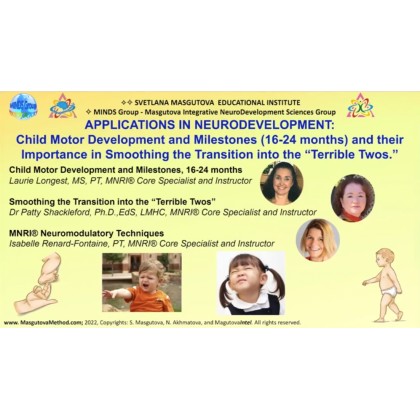
Courses, Conferences & Tools
Applications in Neurodevelopment: Child Reflexes: Motor Development and Milestones (16-24 months) and their importance of smoothing the transition into the “Terrible Twos.”
Applications in Neurodevelopment: Child Reflexes: Motor Development and Milestones (16-24 months) and their importance of smoothing the transition into the “Terrible Twos.”
Ever heard of the "Terrible Twos", that period of childhood development characterized by rapid shifts in mood and behaviors? The MINDS Group lecture series on Child Motor and Developmental Milestones concludes with this hot topic discussion on how meeting the 16-24 month milestones is contributing to higher level integration of primary reflexes and playing a huge role in easing the transition into this normal period of growth.
This lecture presents the motor milestones, discusses their biomechanics, and explains how the transition from basic primary reflexes to variants of the reflexes is foundational for development that is progressing from a neurodevelopmentally subcortical level into more conscious programming and control. It includes a presentation by psychologist Dr. Patty Shackleford on 2-year-old behaviors, explaining a few causes and preventative MNRI® reflex neuromodulation techniques that can help prevent crisis type behaviors. It instructs therapists, parents, and other adult caregivers ways to use the unique and amazing neurodevelopmental resources that 2-year-olds are inherently born with to express fascination with their environment, curiosity, exploration, motivation for independence, and desire to interact.
This lecture is part of an ongoing series that explores Child Reflexes: Motor Development and Milestones. Links to earlier lectures in this series that explore Child Motor Development and Milestones.
Lecturers:
Laurie Longest, PT, MNRI® Instructor and Core Specialist
Dr Patty Shackleford, Ph.D.,EdS, LMHC, MNRI® Instructor and Core Specialist
Video Runtime: 2 hours, 38 minutes, 21 seconds.




